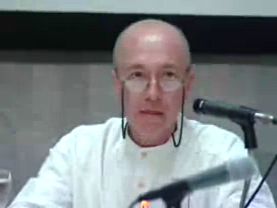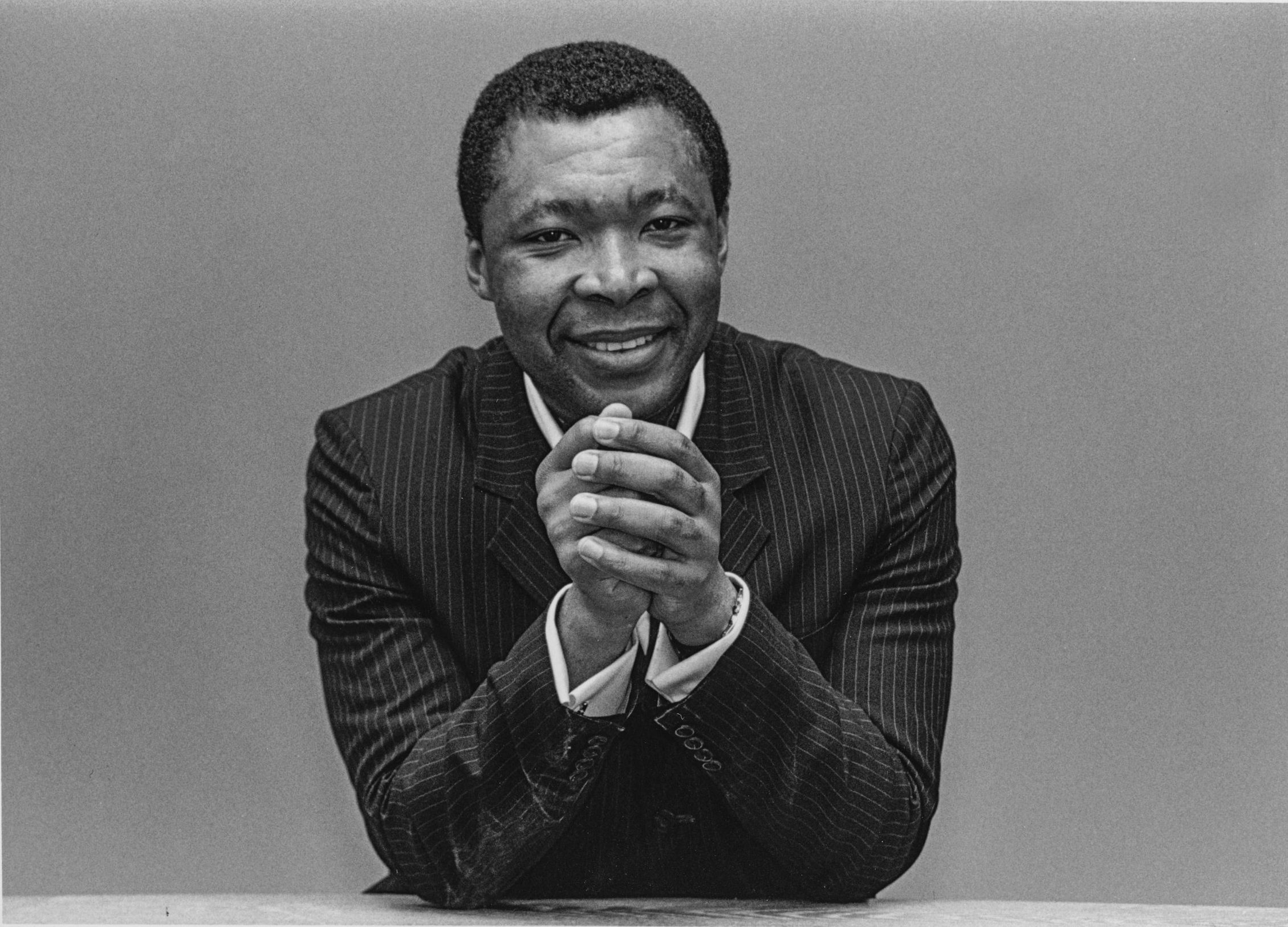Global Islands
In “Trahison”, a poem of 1931, the Haitian Léon Laleau lamented his sense of alienation in trying to express in French – the language and culture in which he had been educated – the African side of his roots:
“And this hopelessness has no equal
To tame, with the words from France
This heart, that has come to me from Senegal?
Et ce désespoir á nul autre égal
D’apprivoiser, avec des mots de France,
Ce cœur qui m'est venu du Sénégal?”
The meaning is more complicated if we think that Laleau’s Africa, like that of Negritude, came to be a substitutive illusion for the European illusion, as the authors of Éloge de la Créolite have pointed out.1 Or, rather, an invention, in an operation to construct Caribbean identity from components of African origin, which participate in a syncretic culture. These components were used to confront the Gallicization imposed by colonial domination, establishing a difference from the submissive non-Western side. Of course, the invention is not enacted from the outside: it comes from a transatlantic Africanity lived and transfigured as an active factor of Caribbean cultures. An Africa as part of the West, although conflicting and subaltern.

© documenta archiv / Video: documenta und Museum Fridericianum Veranstaltungs-GmbH
At any rate, the attitude of the poem is passive, allowing French to domesticate difference. Beginning in the late 1930s, writers of Negritude, especially Aimé Césaire, were concerned with forcing the European language to culturally express a hybrid context, where very active non-European ingredients could participate. Césaire said that he had wanted “to make an Antillian French, a black French that, while remaining French, would bear the black mark”2. This decolonizing operation gives a communicable voice to the excluded and to difference. Shortly before, in the same epoch, Nicolas Guillén, of Cuba, introduced rhythms, intonations, sonorities, and airs of African ancestry into classic Spanish.3 Desiderio Navarro concludes: “by speaking Spanish, the poet is also speaking in a black-African language”4. Already the tonal character of the Bantu and Sudanese languages influences the manner in which we Cubans pronounce and intonate Spanish.
This phonic synthesis participates in the ideology of cultural mestizaje that lays the foundations for the idea of a Cuban identity that Guillen’s poetry helps to construct in the ’30s:
“We are together from far away,
young, old,
blacks and whites, all mixed;
one ruling, the other ruled,
all mixed
Estamos juntos desde muy lejos,
jóvenes, viejos,
negros y blancos, todo mezclado;
uno mandando y otro mandado,
todo mezclado”5
This position coincides with that of the ethnologist Fernando Ortiz, who compared Cuban identity to ajiaco – a stew of very diverse ingredients, in which the broth which stays on the bottom represents an integrated nationality, that of synthesis.6 Similar hodge-podge metaphors, as, for instance, callaloo or sancocho, continue to be used today to define the Caribbean, mythicized as the paradigm of diversity and amalgam.
The problem with this idea of cultural mestizaje is that it can be used to create the image of a fair and harmonious fusion, disguising not only differences, but also contradictions and flagrant inequalities under the myth of an integrated nation or culture. It is the problem of all notions based upon synthesis, which tend to erase imbalances and conflicts. What remains to be seen is which part of the ingredients each puts into the callaloo, and who gets the largest spoonful. Moreover, it is necessary to emphasize that, apart from the broth of synthesis, there remain bones and hard meat that never dissolve, although they support the substance of the broth. The paradigm of the ajiaco, as it refers to hybridization, would have to be complemented with that of the moros con cristianos ("Moors with Christians", the Cuban name for a plate of rice and black beans cooked together), as a reference to integrated coexistence without fusion.7 Both plates interconnect: they must be eaten together. And what for drinking? Perhaps a Coke ...
Another difficulty is that the model of hybridization leads to thinking about intercultural processes through a mathematical equation, by means of division and the sum of elements, the result of which is a tertium quid, the consequence of the mix. These types of models obscure cultural creation that is not necessarily the fruit of the blend, but rather an invention or a specific use of a foreign element.
This is precisely a fertile aspect of creolization: the neologic transformation and invention of cultures in response to different milieus and historical situations. Regarding the Caribbean, emphasis has been placed on mixture and syncretism – to not doubting crucial processes in the region. However, the creolizing dynamics involving different displaced cultures, which share a conflicting new space, is as important for Caribbean ethnogenesis, and more productive to understand current cultural transitions taking place at a global scale.
Cooptation menaces all cultural action based on syncretism. To a greater or lesser extent, syncretism has been a path to resistance and affirmation of the subaltern. Today, in the global and postcolonial era, the syncretistic processes are defined as a basic negotiation of difference and cultural power.8 Those processes, however, cannot be assumed comfortably as if they were a harmonious solution to postcolonial contradictions. They have to maintain their critical stance. There is no real syncretism in the linking of noncontradicting antagonism; syncretism is a strategy of participation, resignifying, and pluralization against hegemony.

© documenta archiv / Video: documenta und Museum Fridericianum Veranstaltungs-GmbH
To force French and Spanish is in reality to empower them, make them capable of communicating other meanings corresponding to other experiences, often marginal. But here again there is ambivalence, because the European languages come out winning. These achievements become appropriated by hegemonic circuits and can be used, as anthropology did, to make the tools of domination more sophisticated. Such are the predicaments in which cultural power is settled today. Beyond, there is French that ceases to be French, transformed into the numerous Creole languages of the Caribbean. Only that French assures writers an international diffusion, very important to areas where very few people are able to read. The high level of illiteracy in countries like Haiti forces writers to produce for exportation. However, according to how things are going on, today it might be better to skip French by writing in Creole and translating straight into English.
If Laleau experienced the European language as a ball and chain, and Césaire and Guillén proposed to transform it, there are other instances in which there is little concern for its use from a position of alterity. At the beginning of the '60s, the Congolese intellectual Théophile Obenga proclaimed in his poem "Tu parleras," dedicated to Césaire:
“words are their words
but song is ours.
les mots sont leurs motsmais le chant est nôtre
mais le chant est nôtre.”9
This position eliminates the conflicts over the origin of the cultural instrument underlying its use. But it maintains duplicity between foreign language and one’s own discourse. These days a dialogic relationship seems more plausible, in which the imposed language and culture are experienced as “own-alien”, as Mikhail Bakhtin stated it in his discussion of literary polyglossia.10 Hegemonic cultural elements are not only imposed but are also assumed,11 reverting the schema of power through the apprehending of the instruments of domination. In this way, for example, the syncretism in the Caribbean and Brazil of African deities with Catholic saints and virgins, practiced by forcibly Christianized slaves, was not only a strategy to disguise the former behind the latter: it implied the installation of all of them at once in an inclusive, multilayered system.
All cultures always feed from one another, be it from situations of domination or subordination. Conscious and selective cultural antropofágia (in other words, the critical swallowing of foreign elements to incorporate them into one’s own organism), proclaimed by the Brazilian modernists in the ’20s, has been a constant of Latin American modernisms. Antropofágia as a program is not so fluid as it seems, since it is not carried on in a neutral territory but rather one that is subdued, with a praxis that tacitly assumes the contradictions of dependence. In the end, who eats whom?
The flux of culture cannot always remain circulating in the same North-South direction, according to the structure of power, its circuits of diffusion, and the accommodation to them. However plausible the appropriating and transculturating strategies may be, they imply an action of rebound that reproduces the hegemonic structures, even if contesting them. It is also necessary to invert the current — not by turning it over to a binary schema of transference, defying its power, but by endeavoring to actively diversify and enrich culture in a truly global direction.
In her poem “Not Neither”, the Nuyorican poet Sandra Maráa Esteves oscillates between languages and identities, constructing a “de-alienating” option that lives through the displacements between disjunction and affirmation proper to this dynamic:
“Being Puertorriquena …bien
But yet, not gringa either
Pero ni portorra, pero sI portorra too
Pero ni que what am I?
...
Yet not being, pero soy, and not really
Y somos, y cómo somos
Bueno, eso sí es algo lindo
Algo muy lindo”12
Bilingual poetry underlines the paradoxes endemic to translation, as translating would mean just to invert languages or to eliminate the text's bilingual character. But this poem also involves a statement in favor of bias instead of neutral bilinguality, biculturalism, and, beyond that, of every transcultural process. As Juan Flores has discussed about a similar poem by Tato Laviera, this text synthesizes a poetics of convergence and divergence.13 Esteves subscribes to and simultaneously unsettles Bakhtin’s “own-alien” notion, by way of turning it around to emphasize the “alien-own”.
We are in the Era of the Hyphen: the proliferation of prefixes and hyphens highlights the difficulties of the inherited language for describing contemporary nonrevolutions. More than inventing new terms, the existing ones are combined and recycled, in a spirit of readaptation, with meaning concentrated less in words than in the connecting dialogical, transfiguring space of the hyphen. But this also represents an interaction originated from within the rupture: it unites at the same time as it separates. Gustavo Pérez Firmat has even summarized the Cuban-American condition as a “life-on-the-hyphen”14.
Upon arrival in the Caribbean, the Spaniards were obsessed for years with knowing whether they were on an island or mainland. A historian from the 19th century, a priest from the Cuban village of Los Palacios, tells us that when Columbus asked the indigenous people of Cuba whether that place was an island or a continent, they answered him by saying that it was “an infinite land of which no one had seen the end, although it was an island”15. Perhaps today's currents point us toward a globe of infinite (perhaps Caribbean) islands.

© documenta archiv / Video: documenta und Museum Fridericianum Veranstaltungs-GmbH
Gerardo Mosquera. Global Islands, in: Okwui Enwezor, Carlos Basualdo, Ute Meta Bauer, Susanne Ghez, Sarat Maharaj, Mark Nash, Octavio Zaya (ed.): Créolite and Creolization. Documenta11_Platform3. Hatje Cantz Verlag, Ostfildern-Ruit. 2003, pp. 87–92.
References
1
Jean Bernabé, Patrick Chamoiseau, and Raphaël Confiant, Éloge de la Créolité (Paris: Gallimard, 1989), p. 20.
2
Aimé Césaire interviewed by Rene Depestre in his "Prologo” to Poesias (Havana: Casa de las Américas, 1969), p. xx.
3
See Alfred Melon, "Guillén: Poeta de la sintesis," in his Realidad, poesia e ideologia (Havana: Ediciones Unión, 1973), pp. 25-61; and Desiderio Navarro, "Sonido y sentido en Nicolás Guillén: Contribuciones fonoestilísticas", in his Ejercicios del criterio (Havana: Unión de Escritores y Artistas de Cuba, 1988), pp. 11-32.
4
Navarro, "Sonido y sentido," pp. 23-24.
5
Nicolás Guillén, "Son mimero 6," in his Obra poética (1920-1958) (Havana: Instituto Cubano del Libro, 1972), vol. 1, p. 231.
6
Fernando Ortiz, "Los factores humanos de la cubanidad," in Órbita de Fernando Ortiz (Havana: Unión de Escritores y Artistas de Cuba, 1973), pp. 154-157.
7
See Gerardo Mosquera, "African in the Art of Latin America," Art Journal(New York) 51, no. 4 (Winter 1992), pp. 30-38.
8
See Marcos Becquer and Jose Gatti, "Elements of Vogue," Third Text (London), nos. 16-17 (Winter 1991), pp.65-81. For a thorough discussion of the idea of syncretismregarding Brazilian religions and culture, see Sérgio Figueriredo Ferreti, Repensando o sincretismo (São Paolo: Edusp, 1995).
9
Théophile Obenga, "Tu parleras," in Anthologie de la littérature congolaise d'expression française, ed. J. B. Tati-Loutard (Yaoundé: Editions CLE, 1979), p. 169.
10
Mikhail M. Bakhtin, "De la prehistoria de la palabra de la novela", in his Problemas literarios y estéticos (Havana: Editorial Arte y Literatura, 1986), pp. 490-491.
11
See Ticio Escobar, El mito del arte y el mito del pueblo (Asunción: R. Peroni Ediciones, 1986), p. 76.
12
Sandra María Esteves, Yerba Buena (Greenfield Center, N.Y.: Greenfield Review Press, 1980).
13
Juan Flores, "Memorias (en lenguas) rotas", in Adiós identidad Arte y cultura desde America Latina, ed. Gerardo Mosquera (Badajoz: Museo Extremeño e Iberoamericano de Arte Contemporáneo, 2001), p. 141.
14
Gustavo Pérez Firmat, Lift on the Hyphen: The Cuban-American Way (Austin: University of Texas Press, 1994). Curiously enough, he later wrote — in Spanish — that he himself does not resign to live on the hyphen; see Gustavo Pérez Firmat, Cincuenta lecciones de exilio y desexilio (Miami: Ediciones Universal, 2000), p. 118.
15
Andrés Bernaldes, "Historia de los Reyes Católicos", in Memorias de la Real Sociedad Patriótica de La Habana (1837), vol. 3, p. 128, quoted in Cinto Vitier and Fina Garcia Marruz, eds., Flor oculta de poesía cubana (Havana: Editorial Aria y Literatura, 1978), p. 63.
